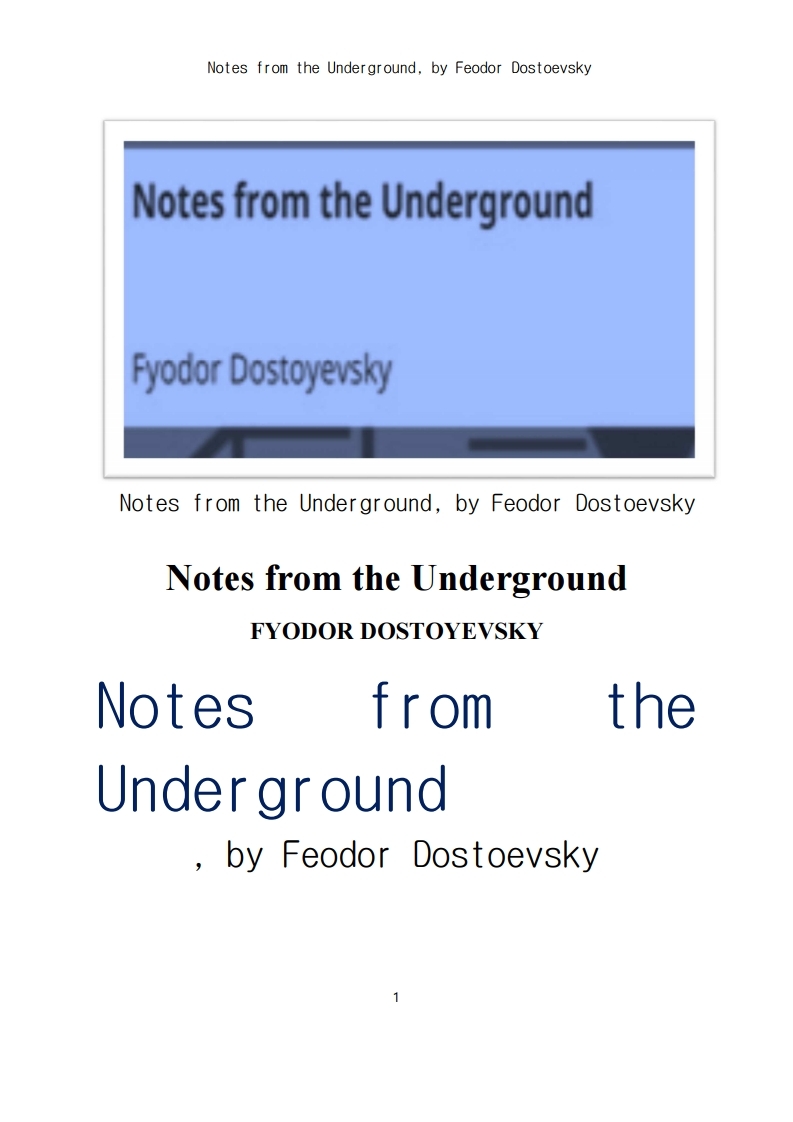소설 > 러시아소설
도스토옙스키의 지하 생활자의 수기들 . Notes from the Underground, by Feodor Dostoevsky
러시아의 소설가, 비평가, 사상가, 도스토옙스키 의 실존주의 이론의 소설.
처음 실존주의 이론의 소설. 자세한 구성 및 내용은 아래 영문참조.
지하 생활자의 수기. Dostoevsky의 소설 1864.
Contents
1 Plot summary 1.1 Part 1: "Underground"
1.2 Part 2: "Apropos of the Wet Snow" 1.2.1 First segment
1.2.2 Second segment
1.2.3 Third segment
Part 1: "Underground"?
Serving as an introduction into the mind of the narrator, the first part of Notes from Underground is split into nine chapters:
The introduction propounds a number of riddles whose meanings are further developed as the narration continues.
Chapters 2, 3, & 4 deal with suffering and the irrational pleasure of suffering.
Chapters 5 & 6 discuss the moral and intellectual fluctuation that the narrator feels along with his conscious insecurities regarding "inertia"―inaction.
Chapters 7, 8, & 9 cover theories of reason and logic, closing with the last two chapters as a summary and transition into Part 2.
Part 2: "Apropos of the Wet Snow"?
The second part of the story consists of three main segments that lead to a furthering of the Underground Man's consciousness.
Notes from Underground (pre-reform Russian: post-reform Russian; also translated as Notes from the Underground or Letters from the Underworld) is an 1864 novel by Fyodor Dostoevsky, and is considered by many to be one of the first existentialist novels.
It presents itself as an excerpt from the rambling memoirs of a bitter, isolated, unnamed narrator (generally referred to by critics as the Underground Man), who is a retired civil servant living in St. Petersburg. The first part of the story is told in monologue form through the Underground Man's diary, and attacks contemporary Russian philosophy, The second part of the book is called "Apropos of the Wet Snow" and describes certain events that appear to be destroying and sometimes renewing the underground man, who acts as a first person, unreliable narrator and anti-hero.





